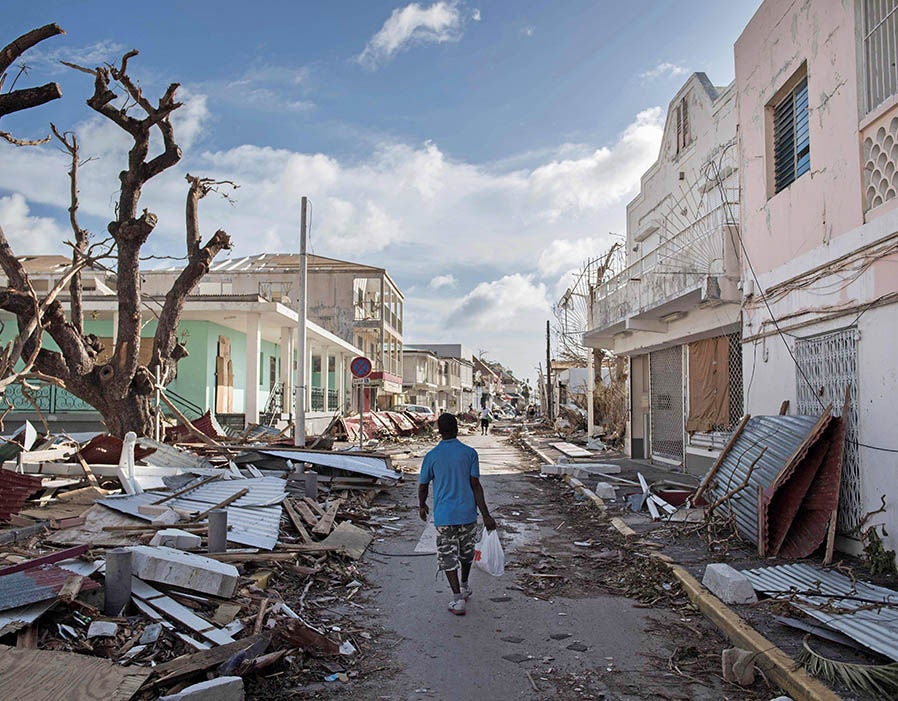Caribbean Coastal Resilience – How We Can Act to Strengthen the Region’s Natural Defenses
[The massive damage inflicted on numerous Caribbean states by recent hurricanes such as Matthew, Irma and Maria must concentrate our attention and prompt all of us toward substantive action:
- We have to recognize the magnitude of the increasing threat of hurricanes to life and property across the Caribbean – none of our island nations are immune to this growing threat.
- For more than fifty years, the IDB has been and will continue to be an active partner of the Caribbean states – given the vast scale of the damage on numerous Caribbean islands inflicted by these hurricanes, the leadership of the IDB understands the urgency of support required.
- As it has done for many years, the IDB stands ready to provide appropriate technical support for the Caribbean recovery and reconstruction efforts.]
Ask an average person how mangroves influence nearshore inundation, and you are likely to get a mix of quizzical expressions. Then ask how seawalls prevent flooding on coasts, and a plethora of answers will be offered. Ironically, both questions are equally significant when it comes to coastal resilience. Typically, the first question is less understood due to a lack of understanding of ecosystem services known as Natural Capital.
The Merriam Webster Dictionary defines resilience as an ability to recover from or adjust easily to misfortune or change. Applied to the Caribbean context, resilience is the ability of our coastal zones to recover from immediate short-term shocks such as hurricanes and cope with long-term hazards such as sea level rise. Resilience involves a combination of physical protections and social safeguards that can sustain a long-term defense mechanism for both people and the environment within a rapidly changing planet.
On September 26-27, 2017, representatives from nine Caribbean countries participated in the Caribbean Coastal Resilience Forum (CCRF) in Nassau, The Bahamas, tackling the issue of coastal resilience and the use Natural Capital as a source of coastal defense and economic sustainability. The dialogue was imperative since 60% of the Caribbean population (over 21 million people) live less than 100 miles from the coast and must depend on a variety of natural infrastructure, not only to buffer against the ravages of the sea, but also provide food and opportunities for employment.
The Caribbean is home to a wide variety of coastal ecosystems (mangroves, coral reefs, seagrass beds, etc.), offering endless possibilities to explore the use of these ecological communities as affordable and low-maintenance coastal protection options. Notably, coastal ecosystems are considered the last line of defense during disaster risk planning and policy development, and are at risk of degradation.
Caribbean coral reefs are valued at approximately US$2billion for the tourism, fisheries and shoreline protection services they provide. Coral reefs across the region are on the verge of collapse, with less than 10% of the reef area showing live coral cover. Mangrove forests, which are known to weaken the effects of waves and storm surges, are systematically cleared to make way for shoreline construction.
Several weeks ago, Hurricane Irma inflicted significant damage on the Bahamian island of Bimini. One Bimini resident who experienced heavy flooding in the absence of adequate mangrove protection stated that, “Mangroves are the island’s only protection against storm surge, and it affects the fish stock.”
To promote and understand the applications of natural infrastructure and preserve ecosystem services, the IDB will host leading scientists, technical experts and policy makers in this two-day forum. Key insights about new technologies, effective frameworks and sustainable coalitions will be discussed to identify practical opportunities and address challenges related to utilizing and conserving Natural Capital on the coastal zone as well as to take action to minimize the real and present danger posed to Caribbean nations by violent hurricanes such as Irma and Maria.
Several CCRF speakers have already provided us with some interesting food for thought:
On Innovation:
“On the marine environment, a vital action for everyone is to reduce the use of single use plastic bottles. Approximately 8 million tonnes of plastic enter the ocean from land every year. At this rate, by 2025 there could be 1 tonne of plastic for every 3 tonnes of fish in the sea. By 2050 plastic could outweigh fish! London UK is aiming to become the first single use plastic bottle free Capital City. San Francisco, USA has already banned their sale.” – Adam Hoksing, CH2M/Halcrow, UK.
On Best Practices:
“Managing coastal resilience in a sustainable manner requires intersectoral collaborations. Understanding other sectors takes time. Invest in this.” – Fokko van der Goot, Boskalis, Netherlands.
On Partnerships:
“Fundación Grupo Puntacana created the Partnership for Ecologically Sustainable Coastal Areas (PESCA), working with diverse governments, universities, non-government organizations, and private sector partners throughout the Caribbean including Dominican Republic, Haiti, Grenada, Florida, Barbados, and Honduras….it has one of the Caribbean’s largest and most successful coral restoration programs.” – Jake Kheel, Punta Cana Group, Dominican Republic.
The Caribbean Coastal Resilience Forum was the first of its kind this year. It is intended to cultivate regional goodwill to promote meaningful and decisive action for investing in sustainable Natural Capital and towards strengthening our natural defenses against increasingly frequent and catastrophic storms.
Authored by Chitralekha Deopersad and Amanda Marray in collaboration with the IDB’s Environment, Rural Development Disaster Risk Management Division.


Leave a Reply